THE PRE-FLIGHT CONTINUED-EXTERNAL CHECKS
By Ivan van der Schaar

In our previous posting we have approached the aircraft, done the internal checks together with documents and cockpit checks. We grapped a rag, fuel tester and dip stick and now we are going to commence the external pre-flight.
When teaching how to do a pre-flight I tell my students to start at the pilot's exit point or rather the aircraft door. This can be the pilot's door on the left hand side as in Cessna, the cabin door at the rear of the aircraft like most twins, the cabin door on the right of the aircraft as in most low wing aircraft or even the canopy as in aerobatic aircraft and warbirds. The basic plan is to follow the external outline of the aircraft either clockwise or anti-clockwise and to touch and check everything even getting down on all fours is usually needed. Aircraft tend to have most parts in the same places but please once again refer to your particular aircraft pilot's manual for the finer detail. I am going to use the example of an Explorer as pictured below.
Upon exiting the cabin I start my way down the tail towards the empennage, checking for any damages to the tail and empennage surface. Look at the leading edge of the stabilizer, the stabilizer being right behind the main gear tend to pick up a huge amount of debris from the main gear. Move around to the elevator. Check the elevator for full free movement from stop to stop and with smooth movement. The rudder needs to be checked in the same manner. Moving down the rudder on this particular aircraft we discover the tail wheel. If it was a nose wheel aircraft nothing would have been found at the bottom of the rudder apart from maybe a fairing to have been checked for security. The tail wheel needs to be inflated properly and in good condition. Check the springs and if there was a tie down remove it.

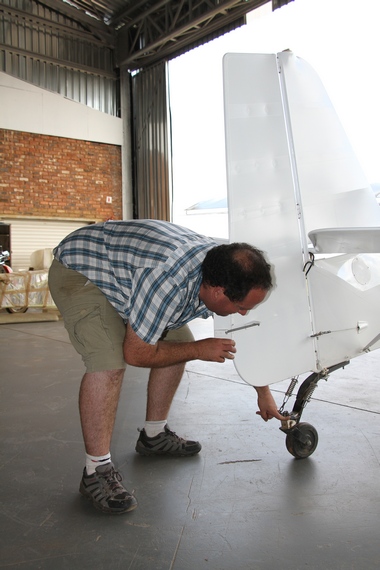 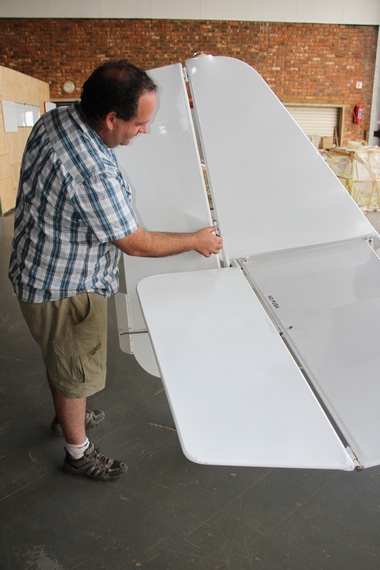
Move around to the port elevator. If a trim tab is installed check its security. Move around the stabilizer and follow the tail section to the rear of the wing. Check the condition of the flap, security, amount of movement on the flap rails and also that the flap push rod has some sideways movement. If there is no side way movement the little bearing is probably seized and requires attention.
Next we get to the aileron. First thing to check is aileron movement up and down. Before moving it make sure no one is close to the other aileron. I have seen fingers being badly hurt as they got caught in ailerons being moved. Move the aileron up and whilst holding with one hand up check the movement of the push rod for exactly the same reasons as the flap pushrod. The reason for holding the aileron up with one hand is to prevent serious injury and abusive language as someone else pushes the opposite aileron up….
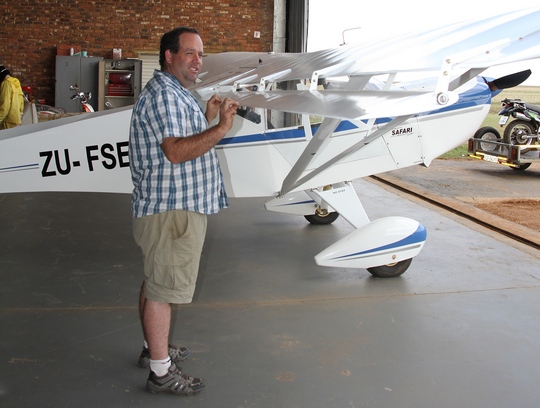
Check the wing tip and move around to the wing leading edge. Check the condition of the leading edge surface. The stall warning sensor is usually found on the left wing. Check its operation. If landing lights is in the wing check the condition. The Pitot tube is also usually found on the left wing. Remove the cover, check the condition and ensure all the holes including the inlet drain and if installed that the static holes are clear. Please do not blow into the Pitot tube. If not properly trained damage can be caused to the inserts of the airspeed indicator.

The main gear is usually found close to the wings…. Check tyre pressure, condition of the gear and if installed oleo condition and inflation i.e. that it is pumped the correct travel with no evidence of hydraulic leaks. If there is dirt on the oleo please take the time to wipe it off. This prolongs the life of the seals of the actual oleo. Also check the torque links at the rear of the oleo are in good shape.
Remove the tie down
Also usually found in most aircraft wings are the fuel tanks and this is where the dipstick and fuel tester come in handy. Please folks if you are flying a high wing aircraft try not to stand on the wings struts unless proper steps are installed. Shoes which might have little stones lodged in them scratch the paint badly. Rather find a step ladder. Check the fuel tank for the amount of fuel on-board by using the dipstick. Make a mental calculation and compare according to the gauges. Ensure the fuel cap is placed back properly. Use the fuel tester to check for water at the appropriate fuel drain. And once finished draining ensure the drain closes again properly with no fuel seepage.
The engine area is up next. Check engine oil levels. Remove any intake covers and check inside for any birds or rats nests. Drain the gasculator and check the fuel drained out of the gasculator. Check the propeller and condition. If the aircraft has been inactive for a while or on a cold winters morning it might be a good idea to turn the propeller by hand through a few revolutions to help get oil moving through the engine, this must be done with MAGS OFF. Always, but always treat any propeller as alive with the idea it might start at any time.
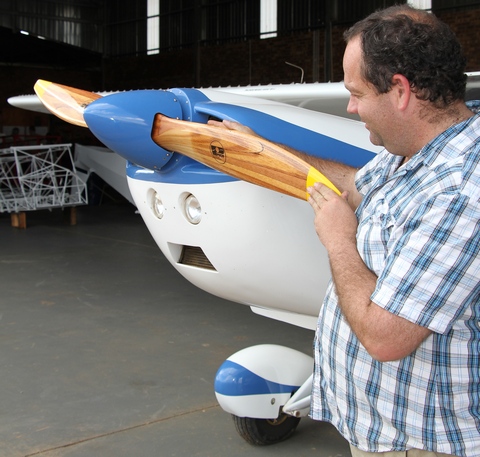
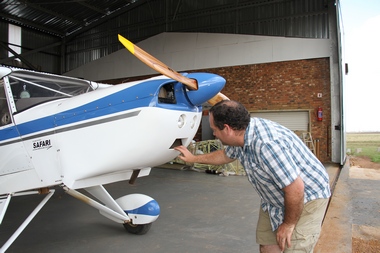 
Check the cowl condition and also severe engine oil leaks will be visible here. Should you fly an aircraft with a nose wheel inspect the nose wheel assembly for hydraulic leaks, tyre inflation, condition of oleo and the torque links.
Only thing remaining now to be check is the right wing which is very similar and self-explanatory if compared to the left wing.
And I am also running out of allocated space so….
Keep it safe over the festive season and always and a merry Christmas happy new year to you and your loved ones.
Till next year
Happy flying…
|
      |























